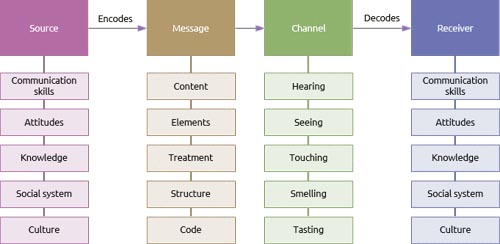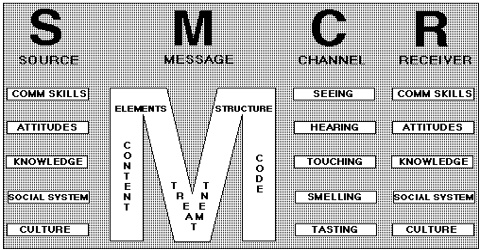Berlo’s S-M-C-R Communication Model
David K. Berlo, a communication theorist and consultant developed a model named S-M-C-R model of communication in 1960 in his book “The Process of Communication”. Berlo pointed out the importance of the psychological view in his communication model. The four parts of Berlo’s S-M-C-R model are S = source, M = message, C = channel and R = receiver.
The model is as follows:

The elements of Berlo’s model are discussed below:
(1) Source: The first element of Berlo’s communication model is the source. All communication must come from some sources. The source might be one person, a group of people, or a company. Several things determine how a source will operate in the communication process such as:
- Communication skills like abilities to think, write, draw and speak.
- Attitudes toward the audience, the subject matter etc.
- Knowledge of the subject, the audience, and situation.
- Social background, education, friends, salary, culture etc.
(2) Message: Message is the information, views or thoughts to be sent by the source. The source must choose the code or language for sending the message
(3) Channel: The channel is the method such as telegraph, newspaper, radio, letter, poster or other media through which the message will be transmitted
(4) Receiver: Receiver is the final element in the communication process. The receiver is the audience for the message.
Criticism of Berlo’s SMCR model of communication:
- No feedback / don’t know about the effect
- Does not mention barriers to communication
- No room for noise
- Complex model
- It is a linear model of communication















